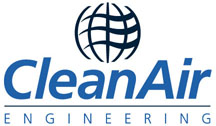
 |
|
|
Client
Relationship Building Program
|
|
|
NT> CleanAir needs to establish a system to measure and classify companies and communicate the results to our employees so we can:
We presently have a client literature file in the Palatine Resource Center. We also maintains a spreadsheet with the company ratings for : The list of companes is then sorted to identify the top 30 . How will we collect the information and who will assign the ratings? We have discovered that most company annual reports have very noble words proclaiming high standards for environment and quality and also showcase innovation. Words are cheap! We need to base our ratings on actions! THAT WHERE WE NEED HELP! What is the best way to know if a company is serious about quality? Ask the employees? Observer the results in the plants? Use there products? Random observations of corporate responsibility or lack thereof? I suggest all of the above? With this we have developed a procedure to rate companies bases on any contact or observation. When talking to a client bring the quality program and ask what is happening? Ask for an opinion of commitment. Ask for examples of results. Environmental and innovation commitment may be a more delicate topic. These however are easy to determine during a plant visit or field job. We need a standard yardstick for each rating. The
more observations the better the rating will be. Client
rating should be considered for every phone call and for
every visit. 0. Poor or not Evident : They havenít recognized the need for a quality system. They make fun of the suggestion of Deming or TQM. They say it will never happen under the present management. 1. Just Started: They have some words about quality in there annual report but there only on one page. Quality is just sound bites and slogans. Nobody knows what the words mean for them. Nobody is doing anything, it is all talk. 2. Vision Established: It looks like the CEO and top management has bought into the quality concept. Company vision statements establish a firm basis for a quality system. Donít let the strategic plan fool you. Running a company with only a Strategic Plans is like running the country on the Declaration of Independence instead of the Constitution. 3. Embryonic: Quality teams are happening. Words are taking on meaning. Everyone knows who their suppliers and there customers They know there products. They have a flow chart of their process. Constant improvement is every one business. People laugh at the statement ìIf it isnít broke donít fix it.î . 4. Procedures and Training: Procedure manuals are conspicuously located in every work area and they contain the necessary procedures for the jobs being performed. Training is formalized and all necessary training is scheduled and required. Everyone has met with suppliers and customers to establish expectations. 5. Doing it: Quality system is in place.
7. ISO 9000 certified: ISO certification happened
on the first try. Sigma 3. General Motors 9. Malcomb Baldridge Award contender: Sigma 4 General Electric 10. World Class Quality: Winner of the Malcomb Baldridge
, Deming or equivalent award and has continued to lead quality
improvement movement. The word quality is not used
in their marketing pieces or their annual report because it is
redundant. Green Rating Guidelines 0. Intentional Polluter : Make their money by intentionally violating environmental regulations or intent. Maxxam (Parent of Kaiser Aluminum and Pacific Lumber) 1. Ignorant: Violating many regulations and donít care and wonít listen. International Paper 2. Dumb: Violating regulations or intent but might change. 3. Words only: Annual report has the right
words but there is virtually no effort to do the right thing at
the plant level unless threatened by EPA. 4. Bare Minimum: Recycle for image. Want to be
legal even if not threatened by EPA. 5. Considering more : Thinking about doing more than
minimum or improving on the Council on Economic Priorities list.
6. Better than required: 7. Continuous improvement: In EPA voluntary reduction program and met or exceeded goal. 8. Pollution Prevention: 9. Truly support the Rio Agreement 10. Fortune Magazine top 20: The Fortune 10 leaders plus 10 most improved environmental companies. 10 Leaders 10 Most Improved Sun Oil (On a recent trip to Philadelphia their refinery stacks looked and smelled very bad) Union Camp 0. Antiquated: Still use typewriters for word processing 1. Ten Years Behind: Y2Kproblem shut down a major operation. 2. Five Years Behind Networked but don't know how to use it. For example they print to copy or to FAX. Networks are not connected. Database is not useful company wide. 3. Words only: Annual report has the right words but there is virtually no effort to do innovative things at the plant level. 4. Minimum: Copy instead of lead. They innovate when forced to by their competitors. 5. Considering more : Know what they want but procrastinate so long that by the time they do it they are behind. 6. Continuos improvement: They use automation a little bit better every time we visit. They can't afford the latest gadgets, but they get more out of what they have then the manufacture ever dreamed possible. 7. Better than required: People like to discover and then teach others better ways to do things with technology. They occasionally are technology leaders, but generally wait for at least one other to make the plunge. 8. Impressive on Core Business: The core business has the latest technology but the rest of the company is in the 1 - 6 category. 9. Constantly Apply the Best Technology: They empower their people with technology. They don't flaunt technology, they make it sing and dance. 10. CleanAir top 20: Top 20 innovative companies.
|
| Last Update: January 13, 2005 |
|---|